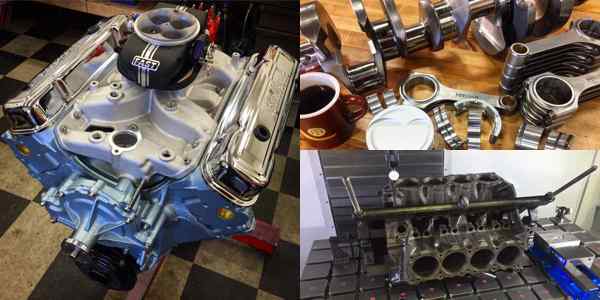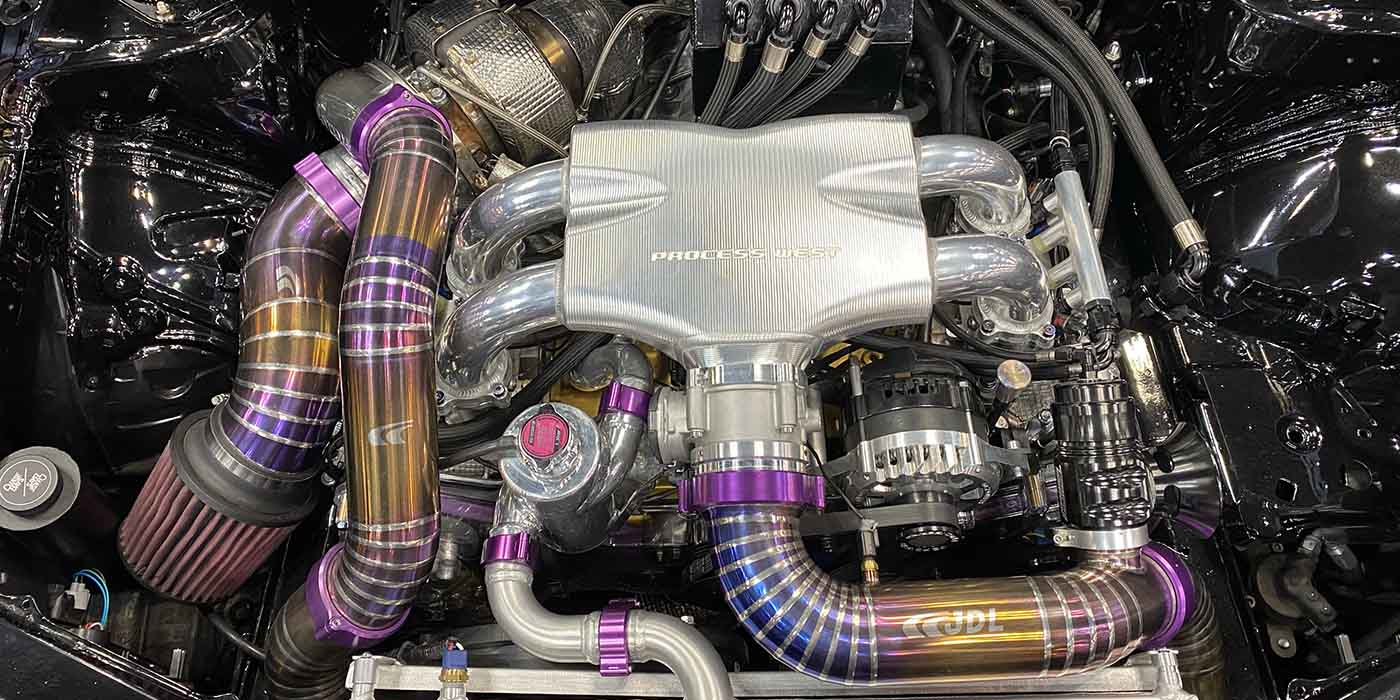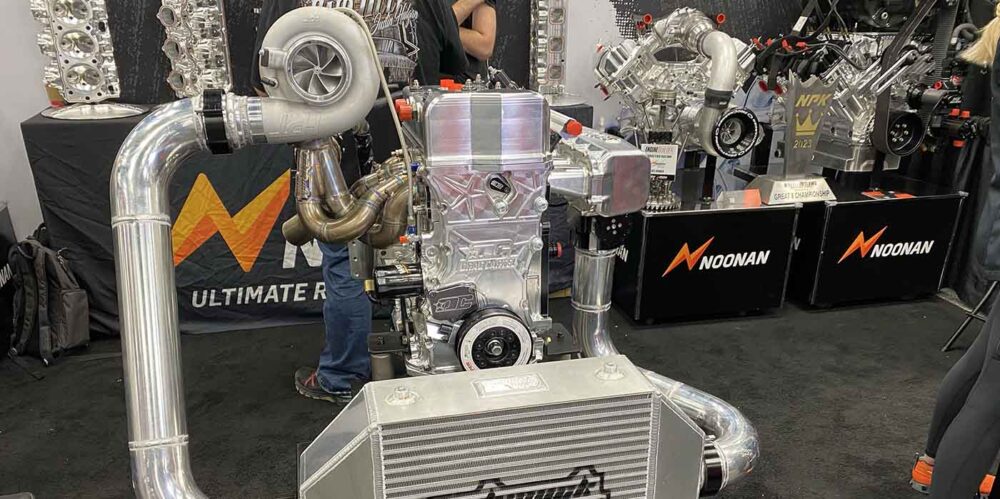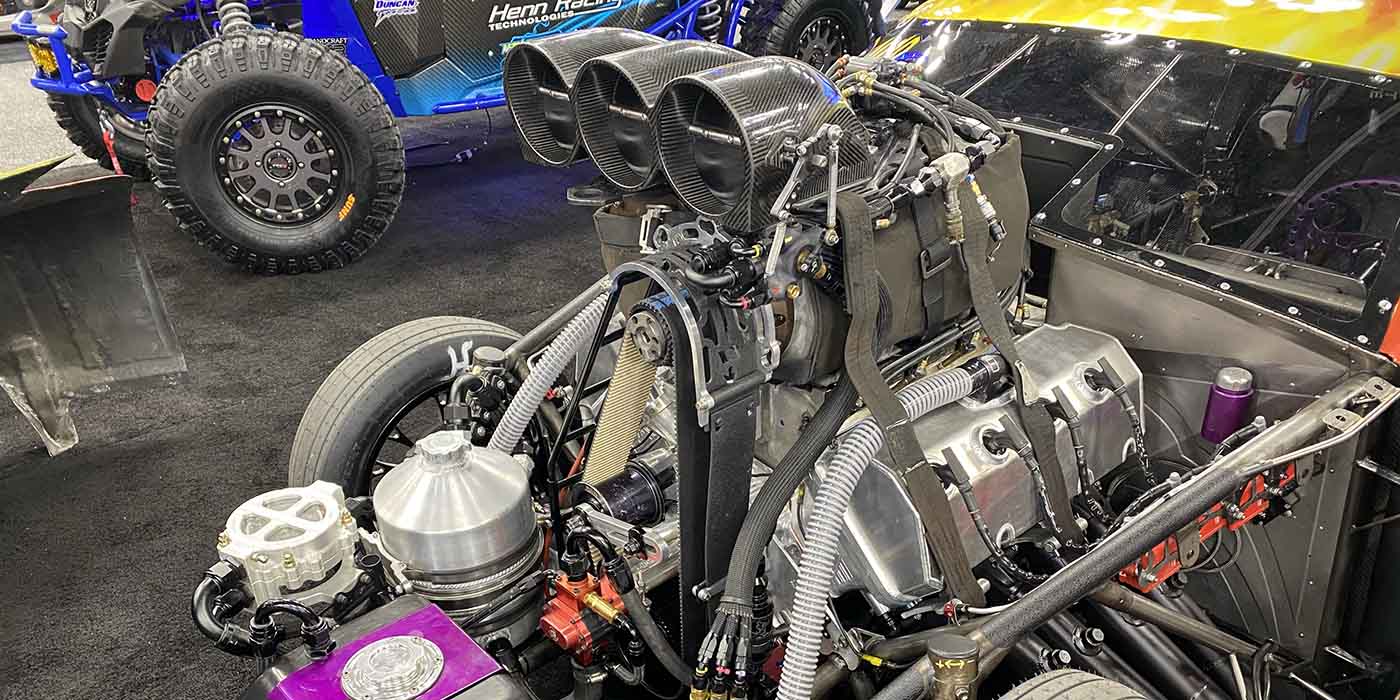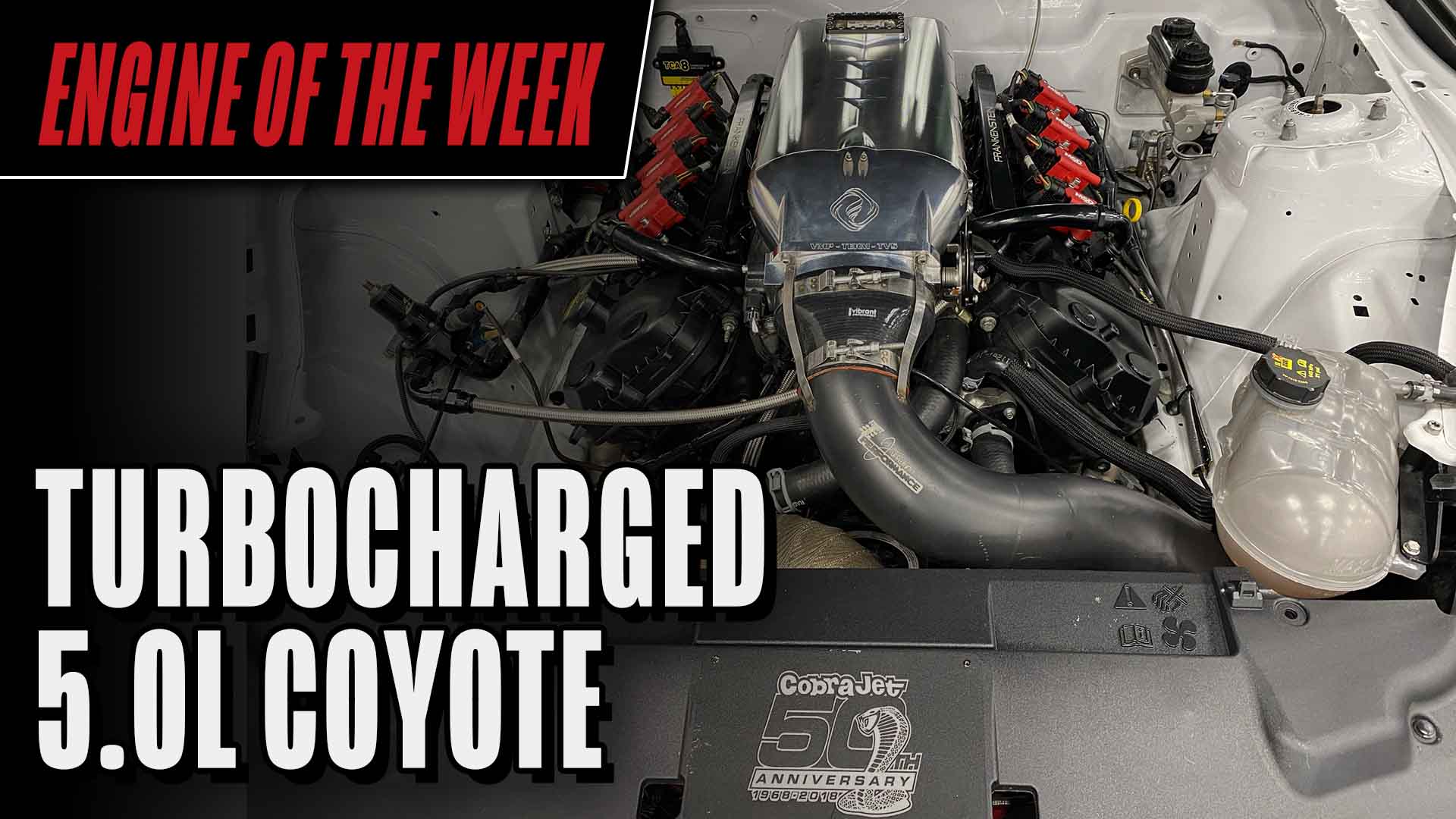When you think of Sonoma County, CA you’re brain begins to picture rolling hills filled with grape vines, large vineyards and as much wine as you can drink. However, Brad and Fran Reich chose Sonoma County as the perfect location for their engine shop, RPM Engines & Machine.

The shop has been in Brad’s family for over 40 years, 30 of those being here in Sonoma County. The majority of engines RPM turns out are for road racecars, detailed restorations of classic cars, and a lot of late model performance Ford Modular and Chevy LS engines. In addition to the machine shop and dyno facility, RPM has a complete general service department.
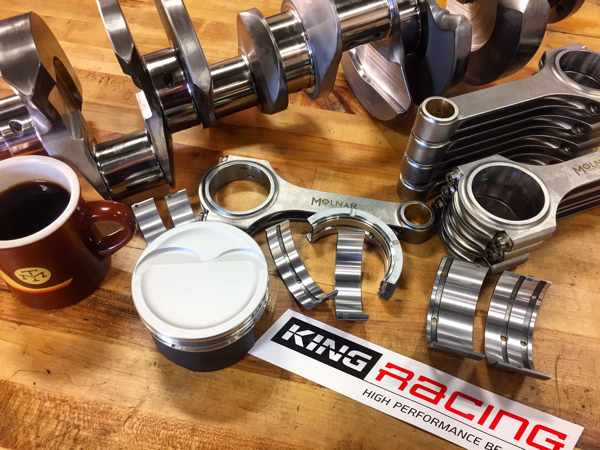
Nate Cutler has been with RPM since 2002 and is the shop’s lead machinist and engine builder. Recently, Nate told us about a numbers matching Pontiac GTO 400 Ram Air II engine the shop had built.
“The Ram Air II GTO is pretty damn rare,” Cutler says. “This car would be one of maybe 200 built. The customer actually found this car in a southern California junkyard about three years ago. He got it hauled back up here to Sonoma County and wanted a fresh build on the motor with some more power added in. He picked our shop based on word-of-mouth reputation and the range of services we offer.”
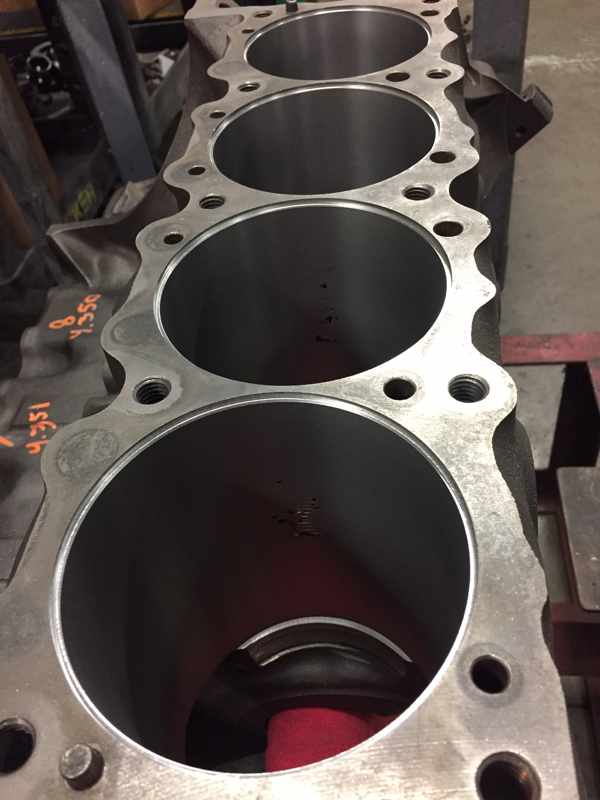
The customer wants the car to be a street toy and weekend cruiser with the option to take an occasional trip to Sonoma Raceway.
“Right from the start we knew there was going to be a decent amount of work going into this engine,” Cutler says. “As part of our initial inspection process we found that the block had been decked many times before. Then the sonic tester showed a wall thickness of only .075″ in certain places, which meant that it would be a full set of sleeves to save the customer’s original four-bolt block.”

What Cutler and RPM wanted to build is an outwardly stock appearing restoration/performance engine with some nice internal parts, a roller cam upgrade, and custom thickness Cometic gaskets to restore deck height.
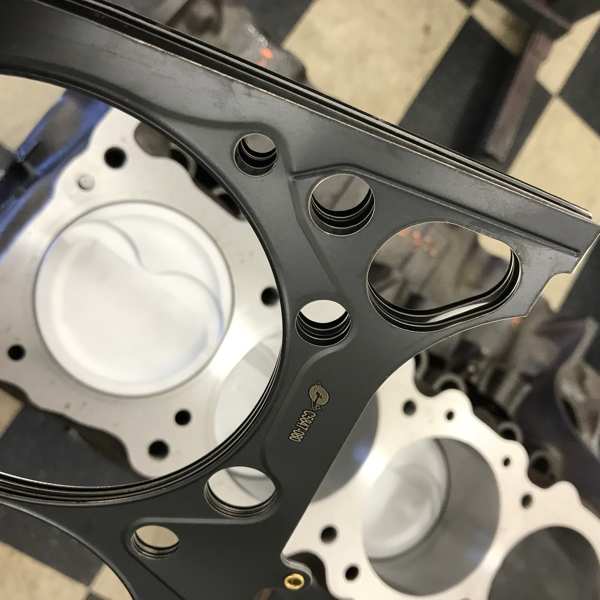
“A full set of 1/8″ wall flange top sleeves were installed to restore bore size to original 4.120″,” he says. “We have line honed the block so the main housing bores are straight and true with the ARP studs. The block has then been honed to size with a torque plate. The heads have a modern five-angle intake and radius exhaust seat valve job along with the porting work to help out the old iron as best we can given the port shape we have to work with.”

This engine is being put together in a way that looks mostly stock, but will have better performance and longevity. To aid in that effort, RPM used a Scat Superlight 4.250″ stroke crankshaft.
“That brings us up to 454 cubic inches,” he says. “I don’t like drilling holes for balancing purposes, so this crank has been turned down in the lathe as our method of lightening it close enough that I can fine tune the balance by chamfering the counterweights instead of drilling a single hole.”
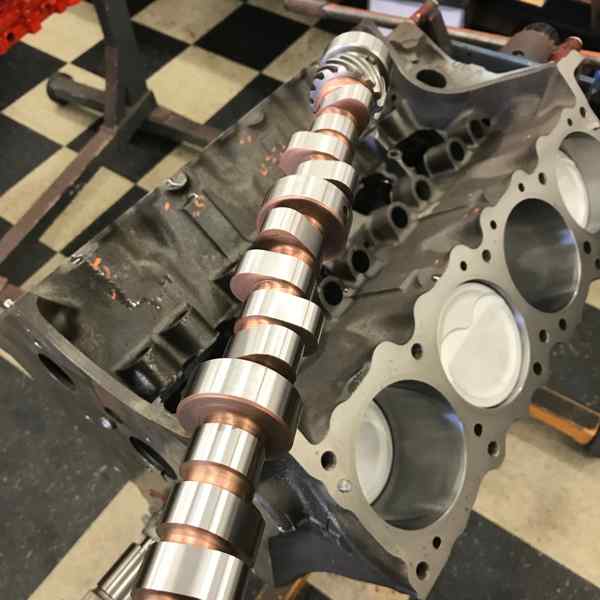
RPM has also been using King HP and XP series bearings exclusively for the last couple years due to consistency in sizing, which Cutler says had become a problem with other brands.
The Crane hydraulic roller cam and some Morel link bar lifters ease worries about wiping a flat tappet cam. RPM used Rollmaster timing sets wherever possible due to their consistent history of high quality and proper fit. Molnar Technologies rods are attached to some ceramic-coated Wiseco forged pistons.
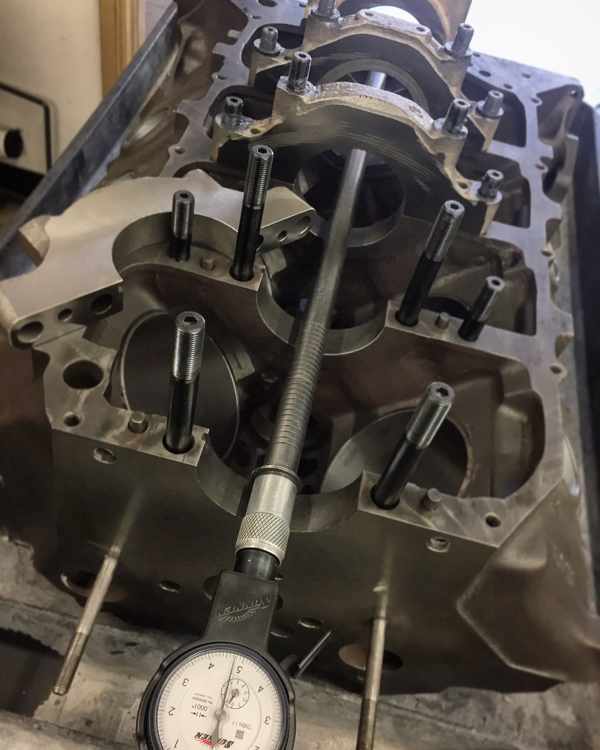
“The heads are original and rare large exhaust port Ram Air II castings, so while the intake side was shaped and ported, the exhaust port only saw bowl work,” Cutler says. “Manley valves and Pac springs along with some Crower roller rockers round out the valve train.”
ARP fasteners were used throughout the whole engine, rods, mains, heads, intake, and accessory kit.
“Cometic made us custom .080″ thick head gaskets for use in this motor, which allow us to restore deck height to original since the block had been previously decked .040″ below blueprint,” he says. “The pistons protrude above the deck to put our squish distance in the appropriate range.”
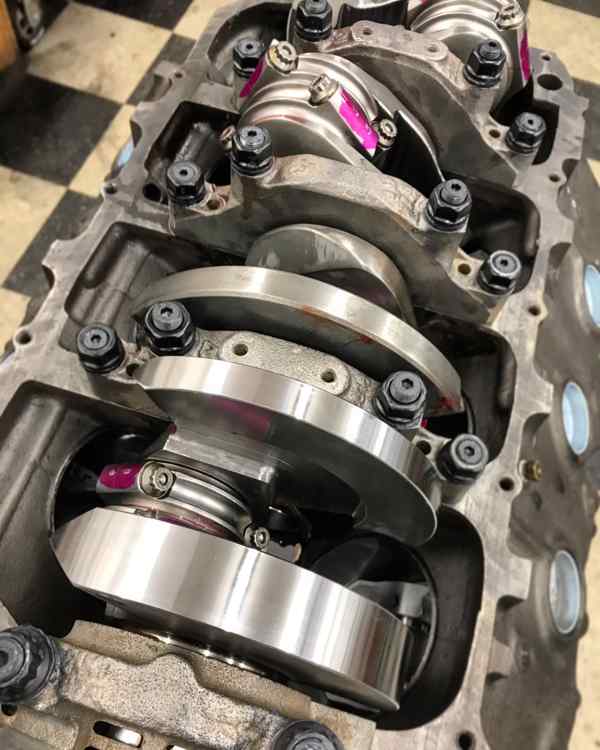
The vast majority of RPM’s Pontiac engine builds utilize a set of aftermarket aluminum heads.
“This specific motor, because of the Ram Air II heads, has slightly different cam specs than our usual package to match the flow of the heads,” he says. “Also, the compression is lower than our aluminum headed motors at 9.75:1 instead of 10.5:1. We keep the street performance or cruiser engines at just above 500hp, which is a good compromise between power and being a mild mannered engine for cruising or even long distance road trips.”
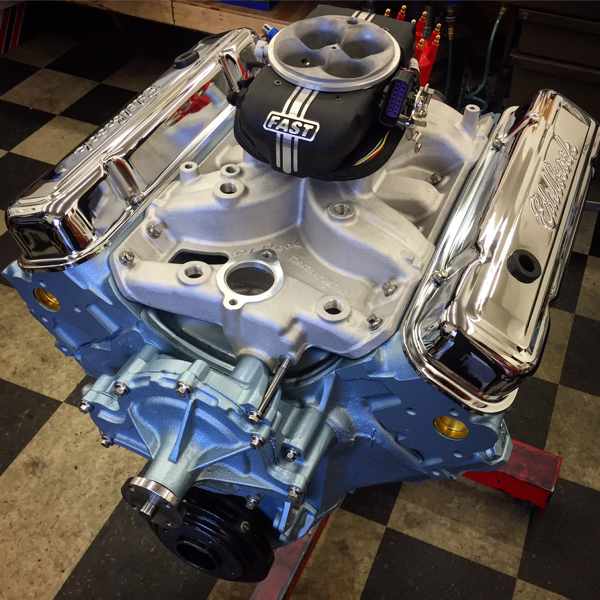
Like all of the engine builds RPM does, this Pontiac engine helped breathe new life into an otherwise written-off vehicle.
“I think for each customer who’s willing to put a lot of money into these old restoration builds, the engine itself is special due to its history, age, pedigree…whatever the specific reason is,” Cutler says. “They chose to restore rather than replace with an LS as is so common these days. Bringing old iron back to life while improving its performance is a major percentage of our work here. This Poncho build is just another fun project like those that have come before it.”
Engine of the Week is sponsored by Cometic Gasket
To see one of your engines highlighted in this special feature and newsletter, please email Engine Builder managing editor, Greg Jones at [email protected]

